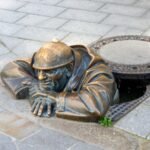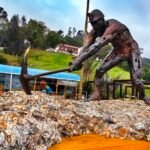The Amazon Rainforest is vast and spans multiple countries. When you think of the Amazon, you might imagine entering through Brazil, but the upper reaches of the rainforest actually include several countries, such as Ecuador and Peru. This time, I visited Ecuador with the intention of experiencing the Amazon Rainforest and exploring its diverse wildlife and landscapes.
South America has a famous mountain range, the Andes, which stretches from north to south across many countries. Ecuador is one of the countries that the Andes traverse. The capital city, Quito, is nestled in a valley between the Andes. With mountains blocking the city to the east and west, it can only expand north and south, creating an irregularly shaped rectangle. Whether you’re heading from Quito to the coast or to the eastern regions, you’ll need to cross the high Andes.
The upper reaches of the Amazon River are in the eastern part of Ecuador. The river starts on the eastern plains of the Andes, where rainfall from the mountains gathers and flows eastward for about 600-700 kilometers before merging into the famous Amazon River. Thus, traveling from Quito to the Amazon Rainforest requires crossing the eastern Andes.
Ecuador has experienced periods of great wealth and several failed governments, resulting in outdated infrastructure and a lack of necessary updates. The country’s main east-west routes are only two lanes wide, and much of the journey involves winding, narrow roads through mountainous terrain.
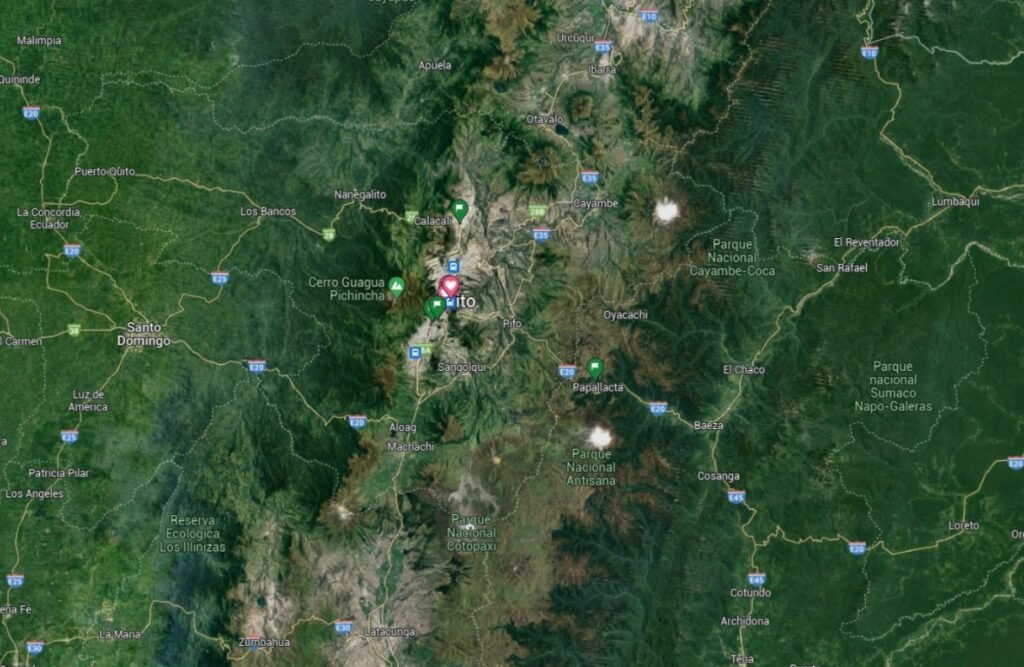
On the boat journey, the landscape of the rainforest changes significantly. The most noticeable transition from secondary forest to deep rainforest can be observed by looking at the riverbanks. In secondary forests, although the Cuyabeno River’s banks are lined with trees, the riverbanks are clearly visible. However, once you enter the deeper rainforest, even though the banks are still lined with trees, it’s impossible to discern where the riverbank is. The roots of the trees on both sides are submerged in the river, creating a continuous, dense wall of vegetation.

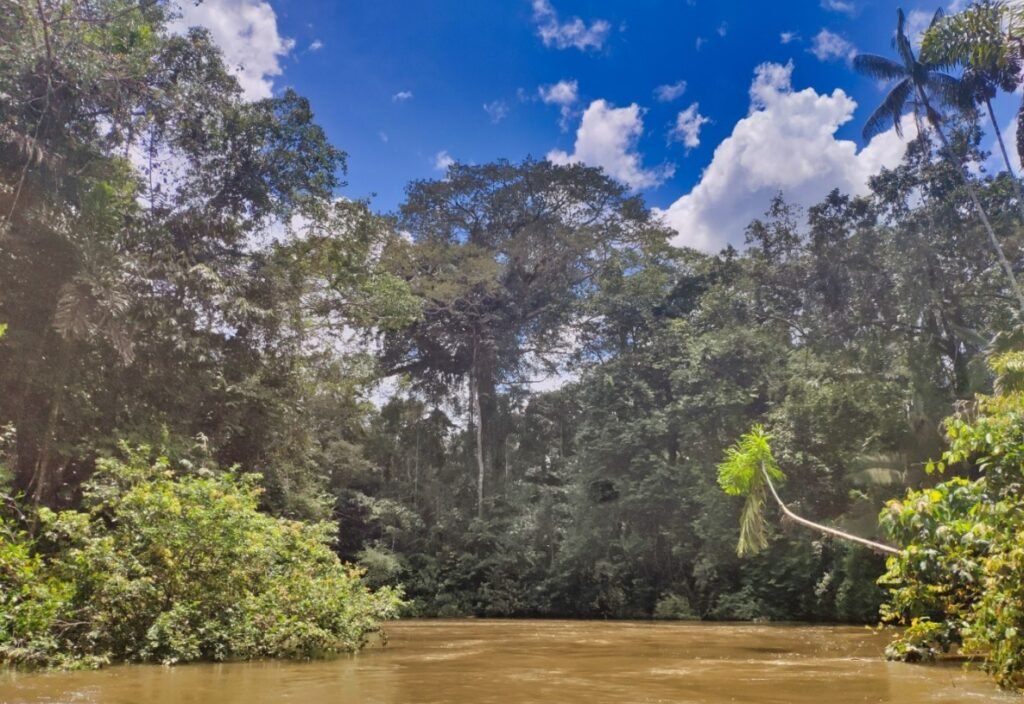
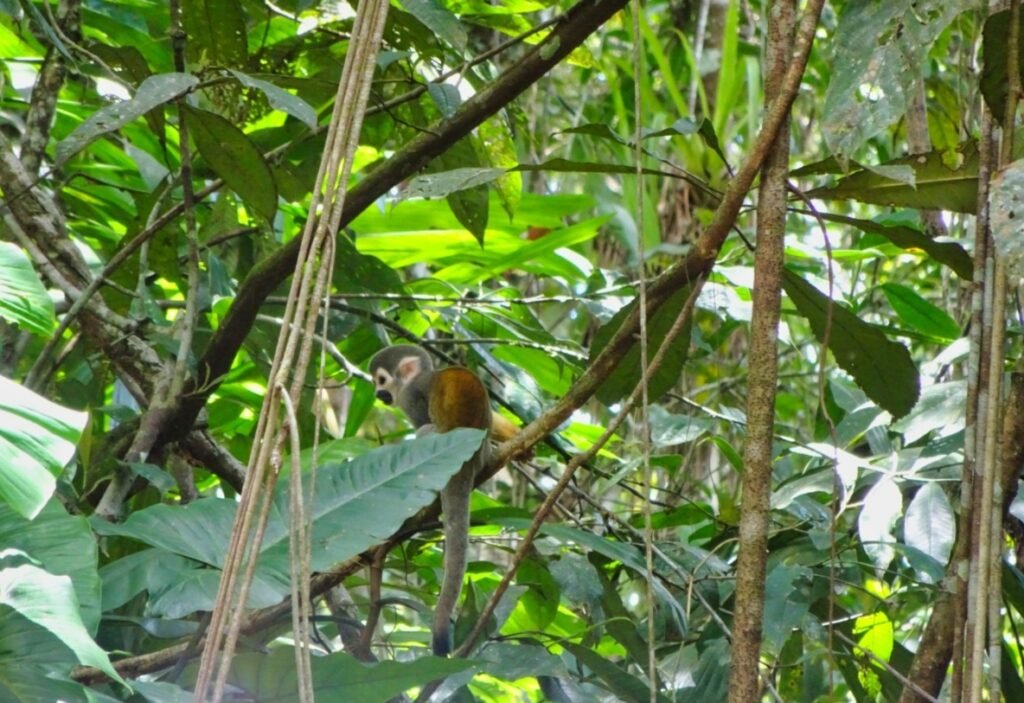
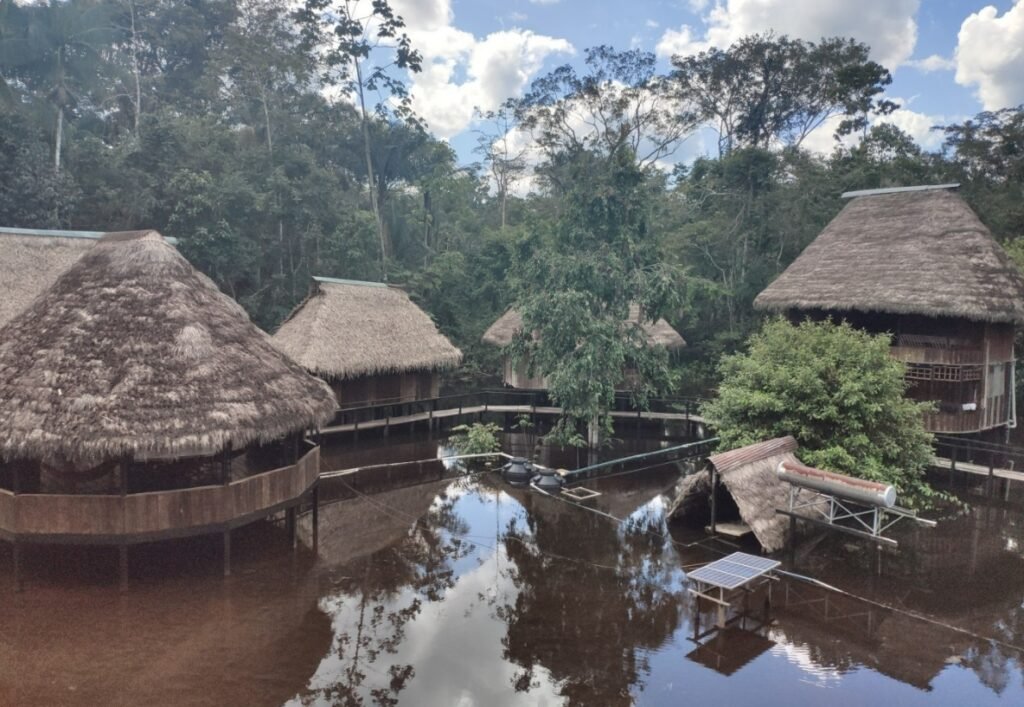
During the hike, our guide introduced us to some fascinating rainforest plants. We learned about the rubber tree, leaves that can be used for writing, and giant trees with exposed roots that are hollow. We also encountered a multi-purpose fruit: its flesh is a staple for the island’s monkeys, and when the peel is rubbed, it emits a gasoline-like smell, which the guide said can be used to start a fire.
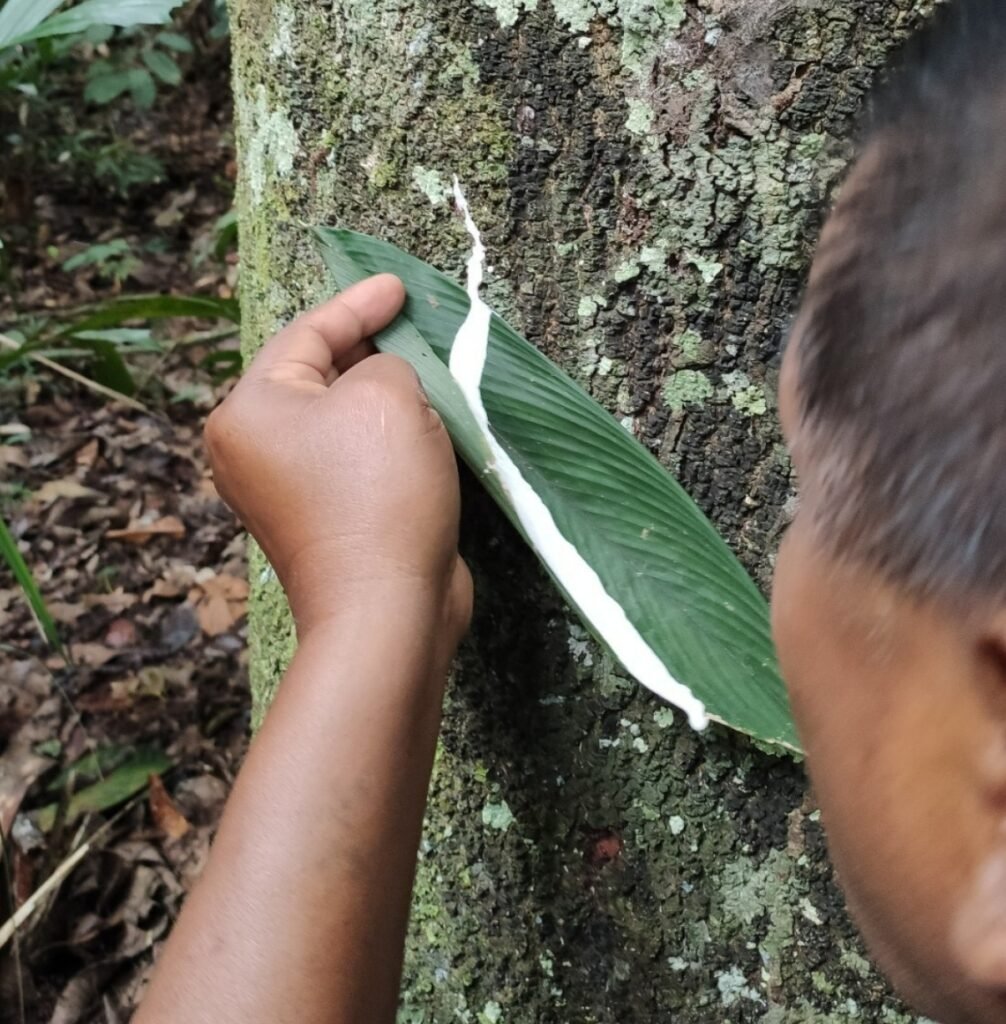
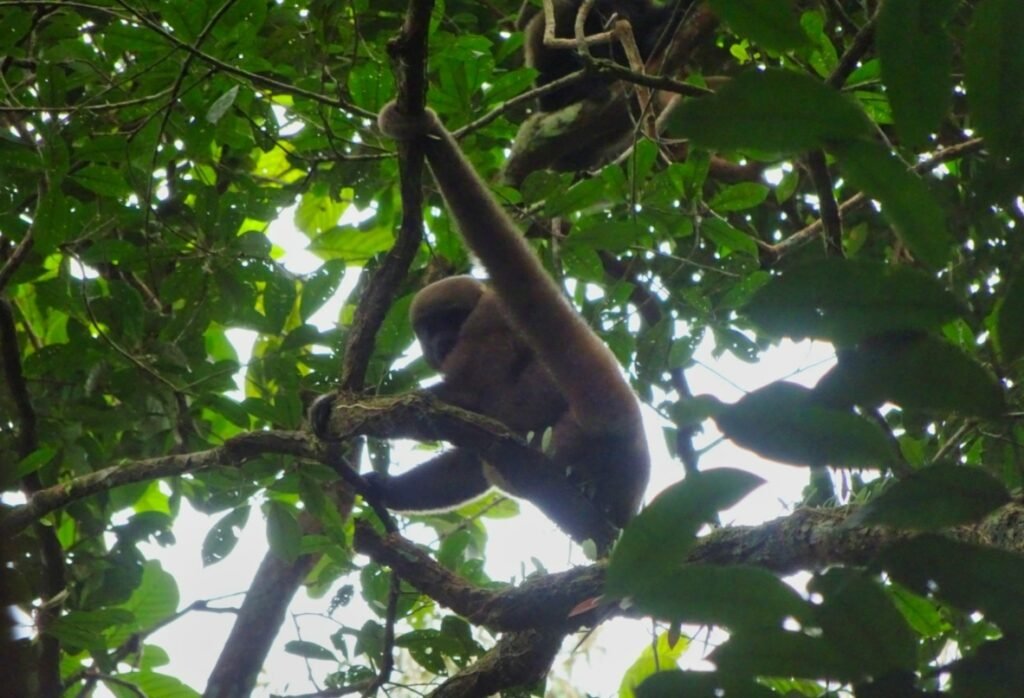
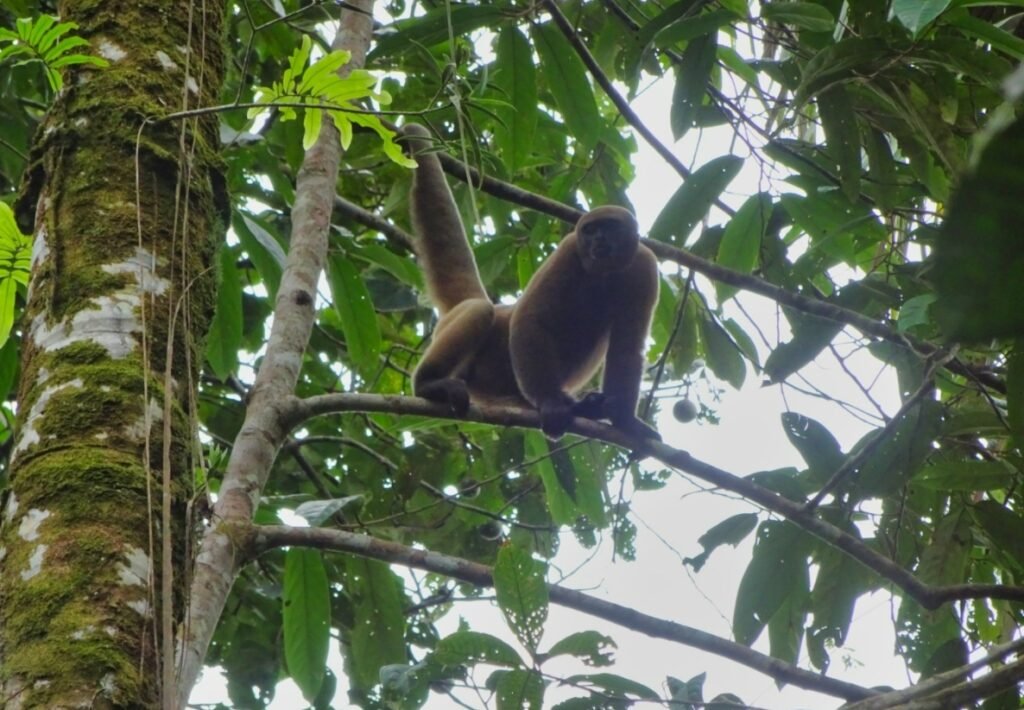
The area is called a “floating forest” because, before the rainy season, it’s a terrestrial river forest. However, during the rainy season, the low-lying terrain gets flooded, leaving only the treetops visible above the water. Our guide mentioned that in such floating forests, the underwater environment often harbors piranhas and large snakes. But in the middle of the lake, where the water level is very high, there are generally no animals, so swimming in the lake’s center is safe if you’re interested. The lake was dotted with boats from other lodges, some tourists took a dip, but most stayed on their boats to watch the sunset.
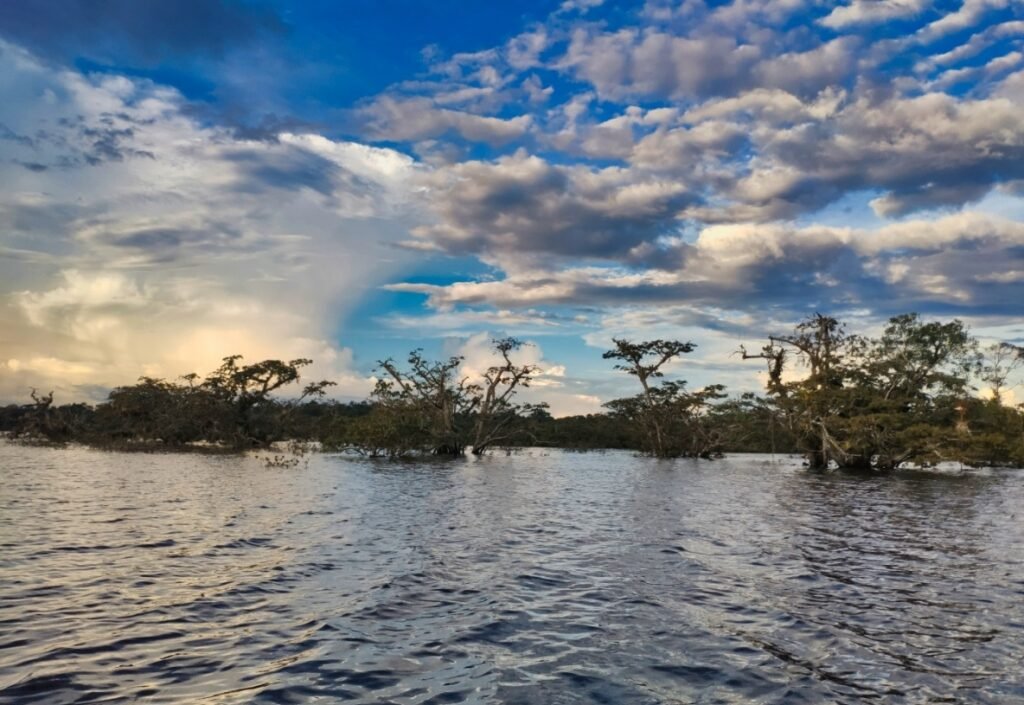
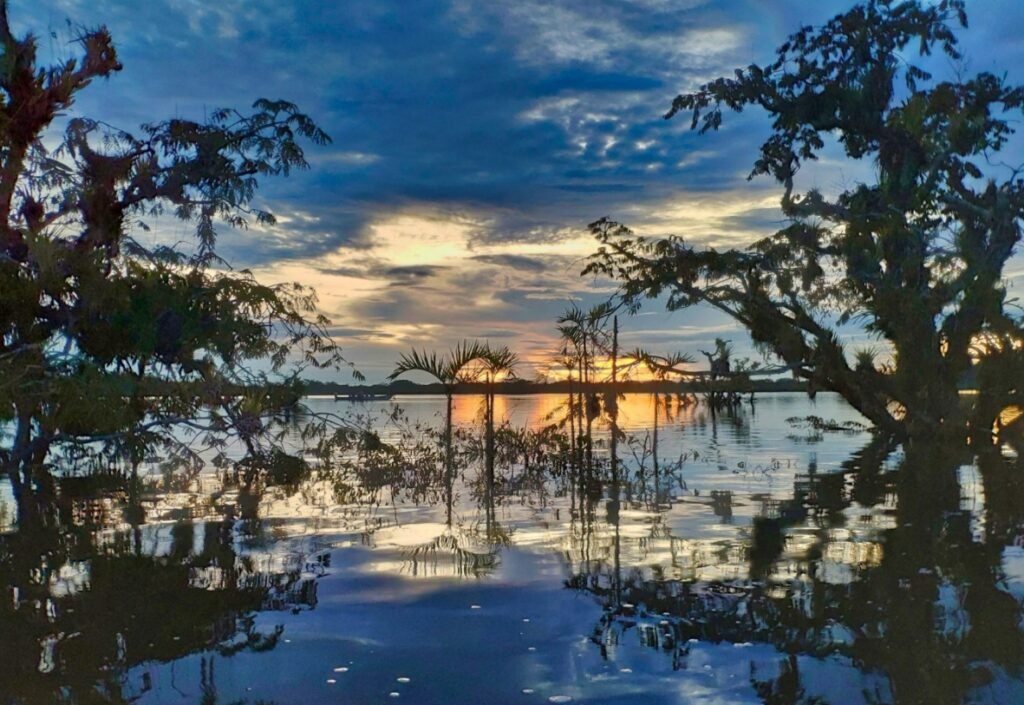
The banana spider, named for its frequent appearance in banana plantations, is highly venomous and a bite can be fatal. Our guide was particularly excited about spotting this spider, as it’s rare to see one.
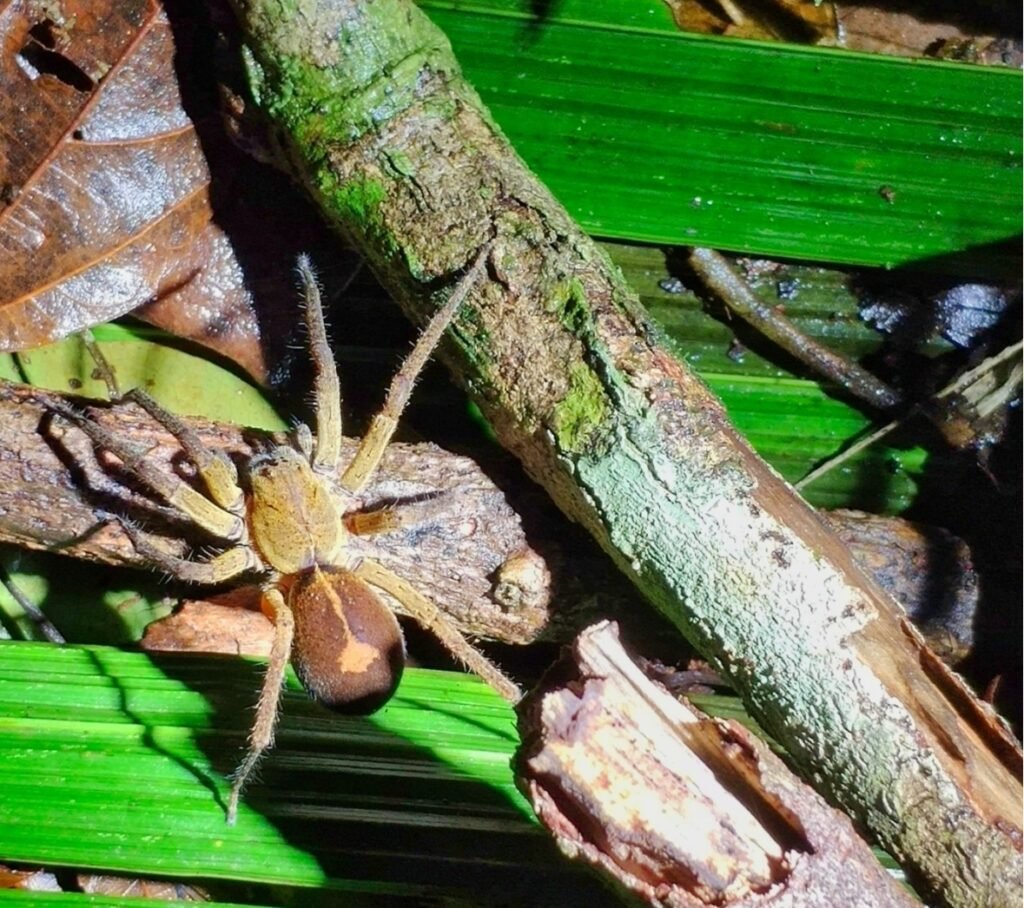
Carefully avoiding the spider, we continued forward until we reached an equator marker. It was yet another division between the Northern and Southern Hemispheres. Reflecting on my visit to the Equator Museum in Quito, seeing this equator marker here brought back a familiar and comforting feeling.
We continued our exploration through the rainforest, and after spotting three banana spiders in a row, I started to feel a bit uneasy. These were only the ones illuminated by our flashlights—who knows how many more might be lurking in the shadows. I whispered to our guide, asking if it was normal to see so many banana spiders and whether we really needed to keep going. After thinking for a moment, the guide agreed that it would be safer to head back to the boat.
As it turned out, we hadn’t ventured very far—our boat came into view sooner than expected. On the way back, the guide had a close encounter with a banana spider. If it weren’t for another traveler in our group, the spider could have bitten him right on the face, which might have resulted in a fatal poisoning.
We finally made it back to our motorboat and started the journey toward the lodge. By then, the night had fully descended. It was yet another tense voyage through the darkness, leaving us on edge the entire way.
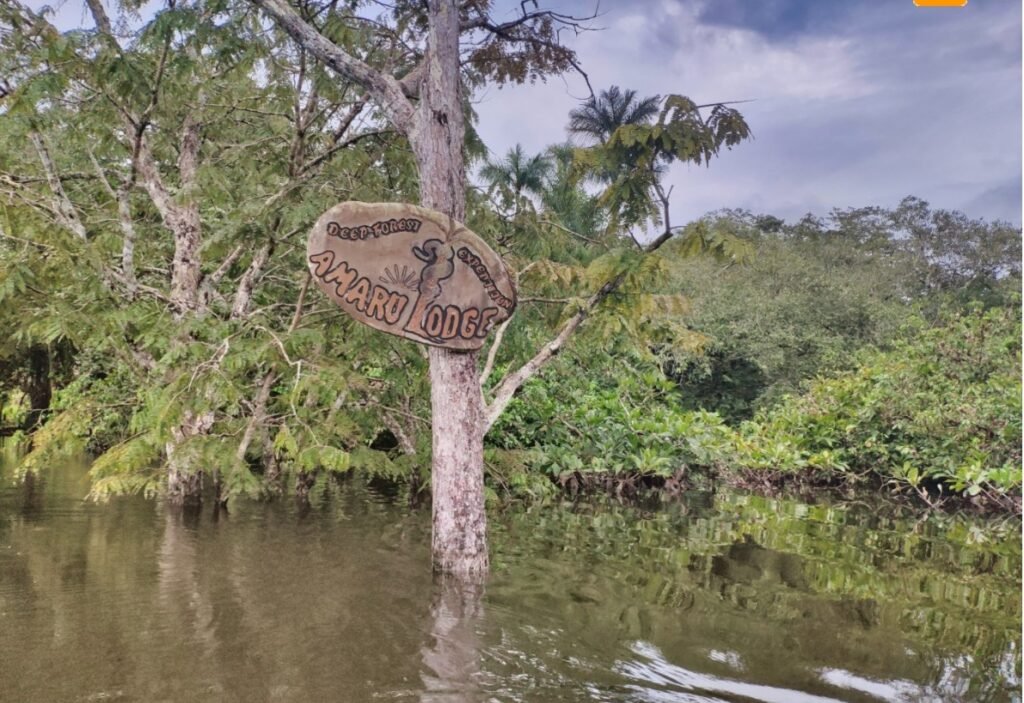
On the third day, the original plan was to go birdwatching early in the morning, but heavy rain forced us to cancel. Instead, we set out again in the canoe to explore the flooded forest and search for monkeys. Since this activity involved paddling a canoe, we decided not to wear the rain boots provided and opted for our regular shoes.
The motorboat towed our canoe to the flooded forest. Once we reached the lake, we carefully transferred from the motorboat into the canoe. The motorboat then headed back toward the reserve entrance, taking along a traveler whose journey ended that day.
Our guide paddled us to an abandoned lodge, telling us that a giant snake had been spotted there just a week ago. Hoping we might see it, he led us around the area, but unfortunately, we found nothing.
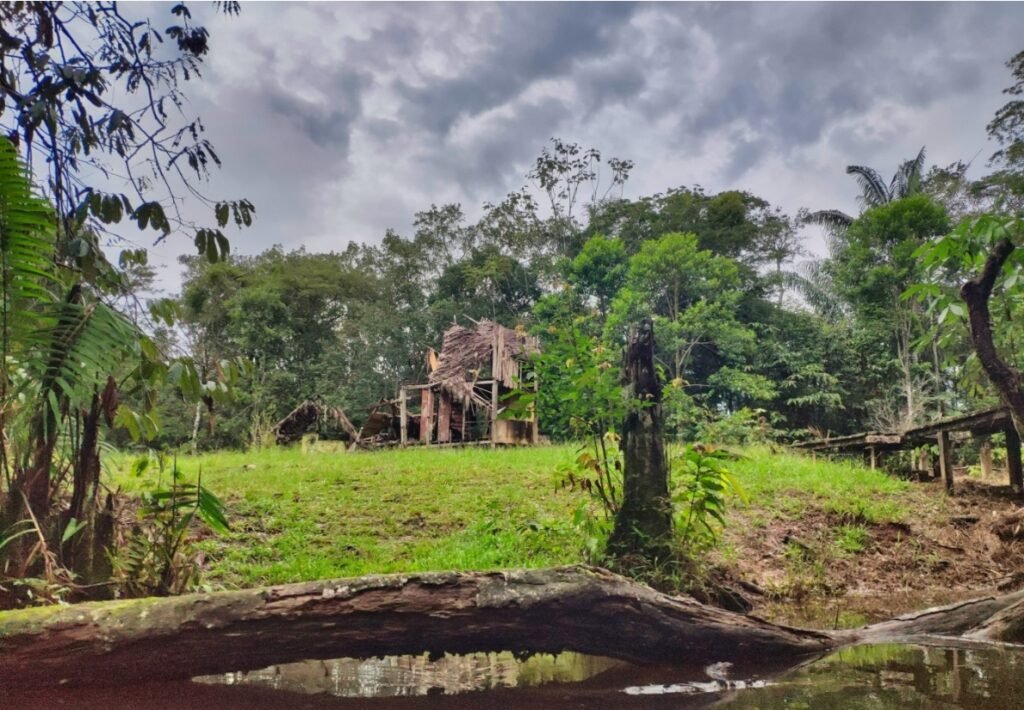
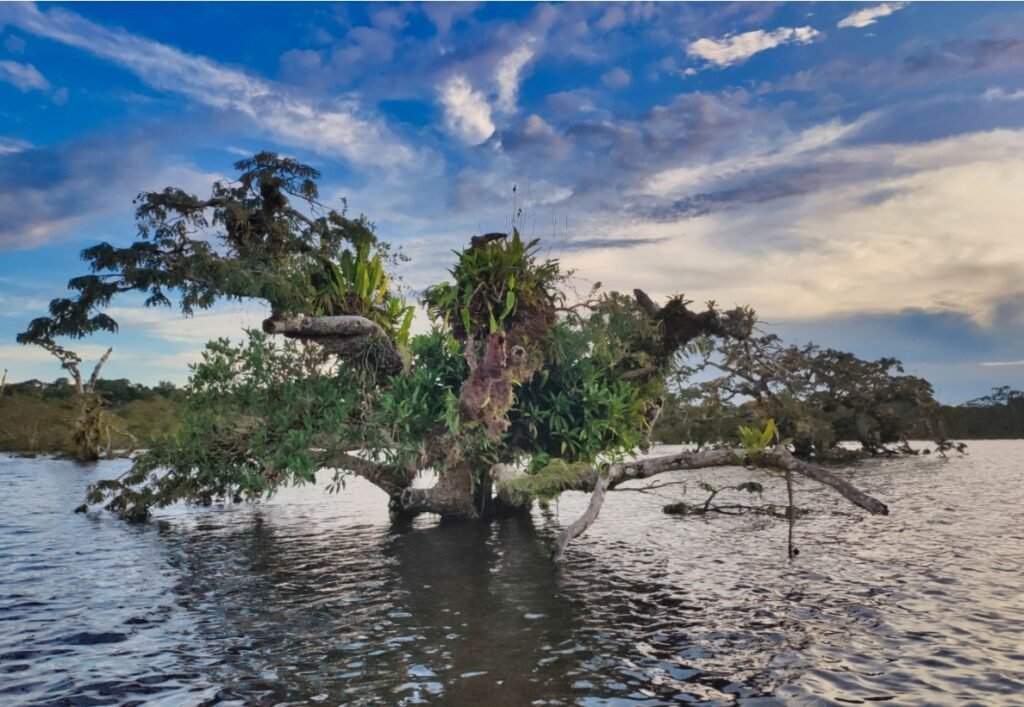
As we began to turn back toward the Cuyabeno Lake, we suddenly heard the sound of monkeys nearby. Our guide, convinced that they were close, decided on the spot to abandon the canoe and head ashore to search for them.
The area we were in was an abandoned lodge with no proper paths to walk on. The guide rushed ahead, hoping to spot the monkeys. I had no choice but to follow him, as he had mentioned earlier that giant snakes had been seen in this area, and I didn’t want to be left behind alone.
We made our way through the dense jungle, stepping carefully as we searched for the monkeys. However, the thick foliage made it impossible to see far enough to catch sight of them. After an unsuccessful search, the guide led us back to the canoe. I couldn’t help but feel relieved—finally, we were off the land! The poisonous spiders from the night before had left me with a lingering fear of hiking through the rainforest, afraid that any exposed skin might get bitten.
But just as I started to relax, the guide announced that he noticed the monkeys moving in another direction. He suggested that we try our luck there, adding that the area happened to be home to a “secret garden” of his.
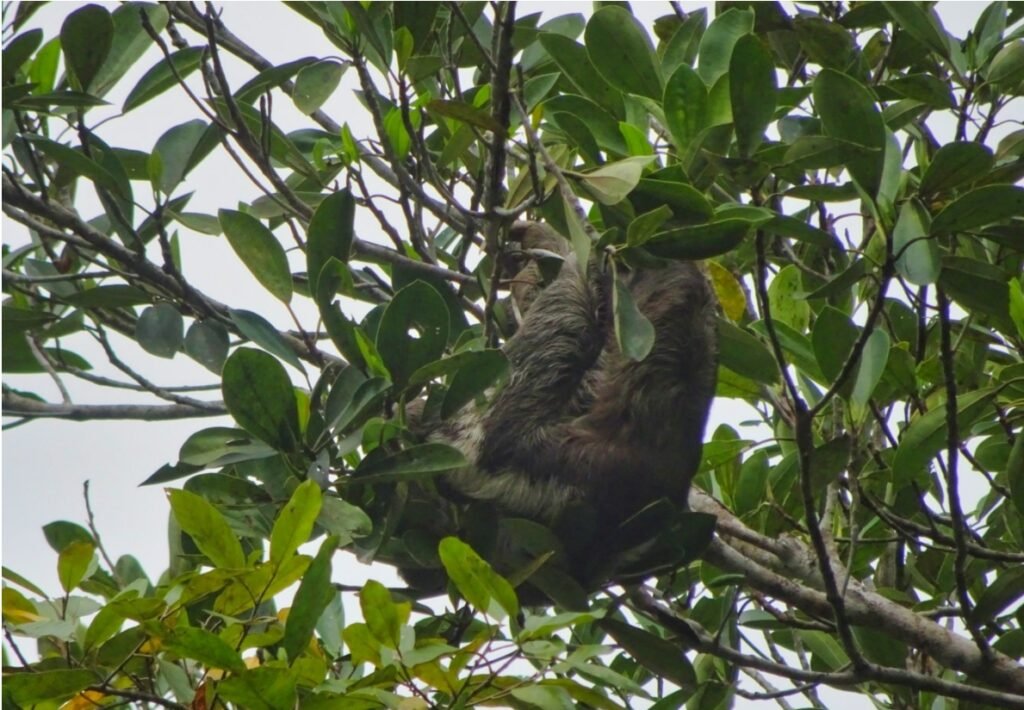
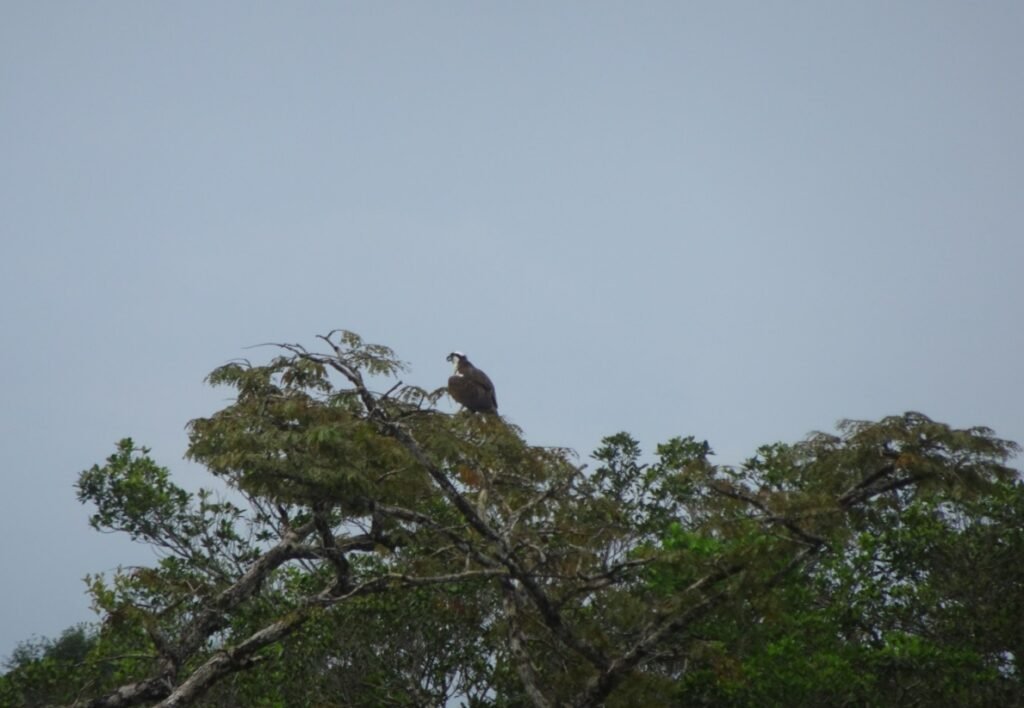
Before long, we reached the guide’s secret garden and went ashore once again, navigating through the muddy forest in search of monkeys. However, just like before, we found nothing. Eventually, we returned to the lake and continued paddling through the flooded forest for a while before setting course back toward the lodge.
On the way back, we were lucky enough to spot several animals along the riverbanks. We saw sloths, monkeys, and even encountered a group of howler monkeys. Their calls were deafening, audible from miles away. But when we finally paddled to where they were, we were surprised to find that they were actually quite small. It was hard to believe that such little creatures could produce such an overwhelming sound.
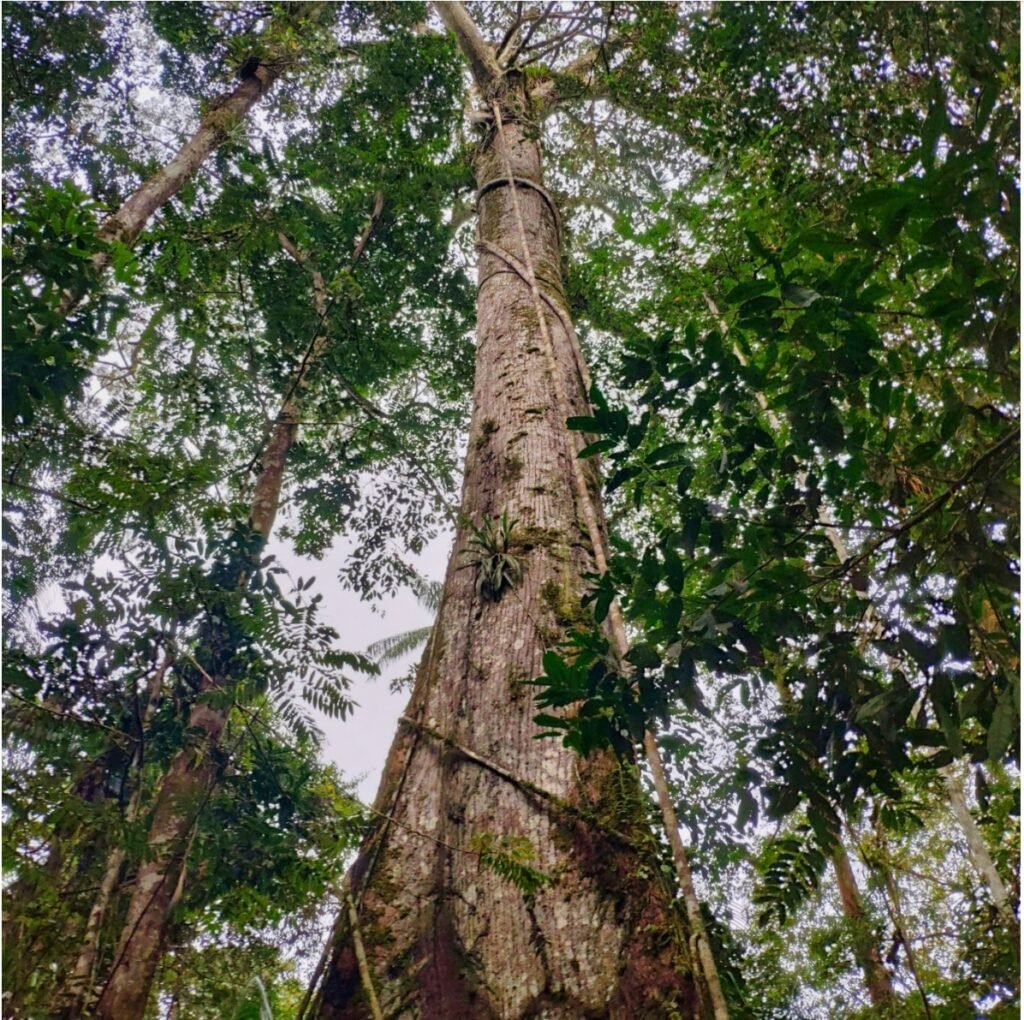
After returning to the lodge and having lunch, we rested for two and a half hours. At 4:30 PM, we set out in the canoe once again, heading back to the guide’s secret garden—this time, thankfully, without needing to leave the boat for hiking. The guide announced that he would take us deeper into the rainforest.
We started by paddling along the wide Cuyabeno River, then turned into a narrower stream, and finally into an even tighter waterway, just wide enough to fit the canoe. The trees on both sides were so close that turning the boat required the rear paddler to follow precisely after the front. The guide sat at the front of the canoe, steering us while cutting away branches blocking the path with a machete.
Some branches extended beneath the water, making it impossible to paddle through. In those cases, the guide had to jump out of the canoe, push us past the obstacles, and then jump back in.
At last, we reached the end of the waterway, where a massive hollow tree stood, with its roots submerged in the water. It was the same kind of ancient tree we had seen on the island the day before. According to the guide, this spot marked the heart of the rainforest.
On the way back, the guide mentioned he wanted to catch a piranha for us to see. However, after trying at two different spots and losing several fish in the process, we had to give up.

